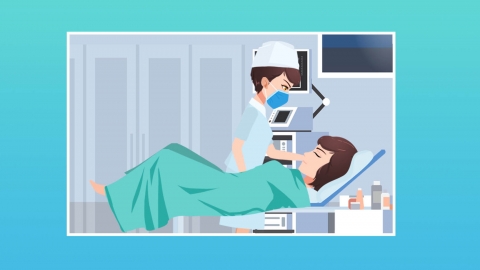What can I eat after appendectomy?
Generally, patients can consume foods such as steamed egg, pumpkin porridge, yam paste, spinach puree, and fish meat after appendectomy. Additionally, medications such as Cefixime Capsules, Amoxicillin Clavulanate Potassium Tablets, Metronidazole Tablets, Ibuprofen Sustained-Release Capsules, and Diclofenac Sodium Enteric-Coated Tablets may be taken under medical guidance. Detailed explanations are as follows:

I. Foods
1. Steamed Egg
Steamed egg is rich in high-quality protein, fats, vitamins, and essential minerals such as iron, calcium, and potassium. Its soft texture makes it easily digestible and absorbable by the gastrointestinal tract, helping the body recover post-surgery by supplying energy and nutrients.
2. Pumpkin Porridge
Pumpkin contains abundant pectin, which protects the gastrointestinal mucosa from acid irritation. It also provides rich vitamins and minerals that offer necessary nutrients for postoperative patients. Additionally, it is easily digested without imposing excessive burden on the gastrointestinal tract.
3. Yam Paste
Yam has the function of strengthening the spleen and nourishing the stomach. It contains substances such as amylase and polyphenol oxidase, which help enhance the digestive and absorptive functions of the spleen and stomach. It is suitable for post-appendectomy patients and can promote recovery.
4. Spinach Puree
Spinach is rich in iron and various vitamins, such as vitamin C and vitamin K, which help postoperative blood replenishment and wound healing. When made into puree, it is easier for patients to chew and digest.
5. Fish Meat
Fish meat contains high-quality protein and unsaturated fatty acids. Its amino acid composition is close to the human body's requirements, making it easily absorbed and utilized. Its tender texture makes it an excellent source of nutrition for patients recovering from surgery.
II. Medications
1. Cefixime Capsules
Cefixime Capsules belong to the cephalosporin class of antibiotics. They exert antibacterial and anti-inflammatory effects by inhibiting bacterial cell wall synthesis, causing bacteria to lose protection from the cell wall and leading to bacterial swelling and rupture under the strong osmotic pressure within the cell. This helps prevent and treat potential postoperative infections.
2. Amoxicillin Clavulanate Potassium Tablets
Amoxicillin inhibits bacterial cell wall synthesis, while clavulanate potassium inhibits β-lactamase, protecting amoxicillin from degradation by β-lactamase. The combination of these two enhances antibacterial activity and broadens the antibacterial spectrum, effectively preventing and controlling postoperative infections.
3. Metronidazole Tablets
Metronidazole Tablets are primarily used to combat anaerobic bacterial infections. Their mechanism of action involves the reduction of nitro groups to amino groups in an anaerobic environment, which then bind to bacterial DNA, interfering with DNA synthesis and leading to bacterial death. This drug is commonly used post-appendectomy to prevent anaerobic infections and reduce infection risks.
4. Ibuprofen Sustained-Release Capsules
Ibuprofen sustained-release capsules are non-steroidal anti-inflammatory drugs (NSAIDs). Their primary mechanism involves inhibiting cyclooxygenase activity and reducing prostaglandin synthesis, thereby alleviating inflammatory responses and pain perception. They can effectively relieve postoperative wound pain.
5. Diclofenac Sodium Enteric-Coated Tablets
Diclofenac Sodium Enteric-Coated Tablets exert anti-inflammatory, analgesic, and antipyretic effects by inhibiting COX to reduce prostaglandin synthesis and by inhibiting arachidonic acid release. They help alleviate postoperative pain and inflammation.
In daily life, attention should be paid to food hygiene to avoid consuming unclean food, which could cause gastrointestinal infections and affect postoperative recovery. Vigorous exercise should also be avoided, as the body requires time to heal after surgery. Excessive physical activity may cause wound dehiscence or impair healing. Activity levels should be gradually increased according to the individual's recovery status.





